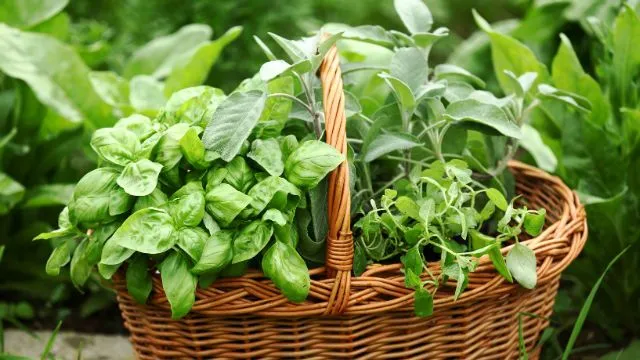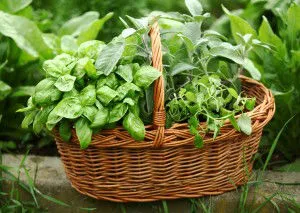
- Share on Facebook138
- Share on Pinterest
- Share on Twitter
There are countless herbal remedies that are highly effective for many different ailments. For centuries, people used herbal medicines to treat all types of illness and other health conditions. In fact, the wide array of synthetic medications used today were not even in existence a century ago.
Returning to natural options can be a great way to tackle health problems without the side effects – and it’s surprisingly easy to grow many of them right in your own garden.
Aloe vera
Aloe vera is easy to grow; all you need is moist soil and sun exposure. The clear jelly inside its thick leaves can be used as a protective coating over a cut, burn or abrasion to promote faster healing. Just break off a leaf, open it up and smear on the gel. It’s great for eczema and other skin conditions as well.
Lemon balm
Lemon balm also has a variety of uses and is easy to grow. It can reach 24 to 36 inches tall and makes a nice green patch of medium-textured leaves among the other herbs and flowers in your garden. This aromatic mint offers calming properties which can help soothe the nerves and relieve headaches. Its relaxing antispasmodic effect can also be soothing for digestive issues.
Rub the leaves against your skin to relieve the itch of a mosquito bite and to help heal sores. For other conditions including anxiety, headaches, depression, insomnia and upset stomach, make it into a tea by picking the leaves, rinsing them, patting them dry, placing them in a tea ball or infuser and adding boiling water.
Thyme
Thyme can be planted in your herb garden, along a short garden wall, at the edge of a walkway or in containers. It also makes a beautiful patch of small ground cover. The herb is a potent antiseptic which can help treat congestion, sinus infections, gas and coughs. Just prepare as above by placing the leaves in an infuser or tea ball and adding boiling water. The water can also be poured directly over the leaves.
Rosemary
Rosemary is a perennial woody herb that helps to stimulate energy and optimism. It makes a great alternative to coffee when you’re looking for a “second wind,” but don’t want to turn to caffeine. It can also improve memory and concentration by bringing more oxygen to the brain. According to a 2013 study presented at the Annual Conference of the British Psychological Society, the aroma of rosemary essential oil is able to enhance cognitive functioning in healthy adults, extending the ability to remember events and complete tasks in the future.
Planting a row of rosemary, a long-lived and drought-tolerant plant, makes a pretty evergreen hedge – just one plant may be all you need as a little goes a long way.
Lavender
Lavender is beautiful and smells heavenly. It’s also been recognized as a mild antidepressant as well as an insomnia, tension and stress reliever. You can even use its fresh flowers in salads or raw honey for a tasty twist. Many people use the dried flowers in a homemade eye pillow or heating pad for tension and stress relieving effects, though it can also be made into a tea.
Lavender plants prefer a hot, sunny and dry climate. This herb is known for its beauty as well as its ability to withstand heat and drought.
German chamomile
 German chamomile has a delightful apple scent, as well as a beautiful small, yellow-bellied flower that makes an attractive addition to any garden. By making it into a tea, it can be used to treat colic, nervous stress, infections and digestive disorders.
German chamomile has a delightful apple scent, as well as a beautiful small, yellow-bellied flower that makes an attractive addition to any garden. By making it into a tea, it can be used to treat colic, nervous stress, infections and digestive disorders.
Peppermint
Peppermint plants are one of the easiest to grow, in fact, the most difficult part is getting it under control as it’s an invasive plant that can easily take over everything. Planting it in a pot indoors rather than in your garden is a good way to prevent this.
Not only is peppermint delicious, but it’s a first herb of choice when used as a tea for treating colds and flus, as it can relieve a number of symptoms at once: congestion, headache, muscle aches, nausea and fever. It’s also well known for settling an upset stomach.
Pot marigold
Pot marigold, or calendula, has long been used for its antifungal, antiseptic and wound-healing abilities. With full sun exposure, the plants can easily be grown in a vegetable garden, used as a flower border or simply grown in a pot. Many gardeners grow calendula for its cheery bright flowers and profuse blooming.
The flower petals lend to skin-soothing properties, helping to relieve insect bites as well as wounds and stings. Harvest the petals fresh, or dry entire blooms before they’ve formed seeds.
-The Alternative Daily
Sources:
http://www.motherearthnews.com/natural-health/benefits-of-aloe-vera-zmaz11zhar.aspx#axzz3DsKwnCt4
http://theselfsufficientliving.com/list-of-medicinal-plants-to-grow-in-your-garden/
http://www.healthline.com/health-slideshow/herbal-remedies-from-your-garden#1
http://www.bps.org.uk/system/files/images/ac2013_final_programme_for_web_2.pdf
- Share on Facebook138
- Share on Pinterest
- Share on Twitter

